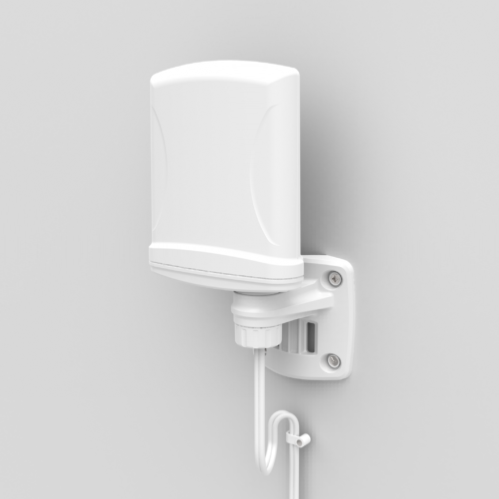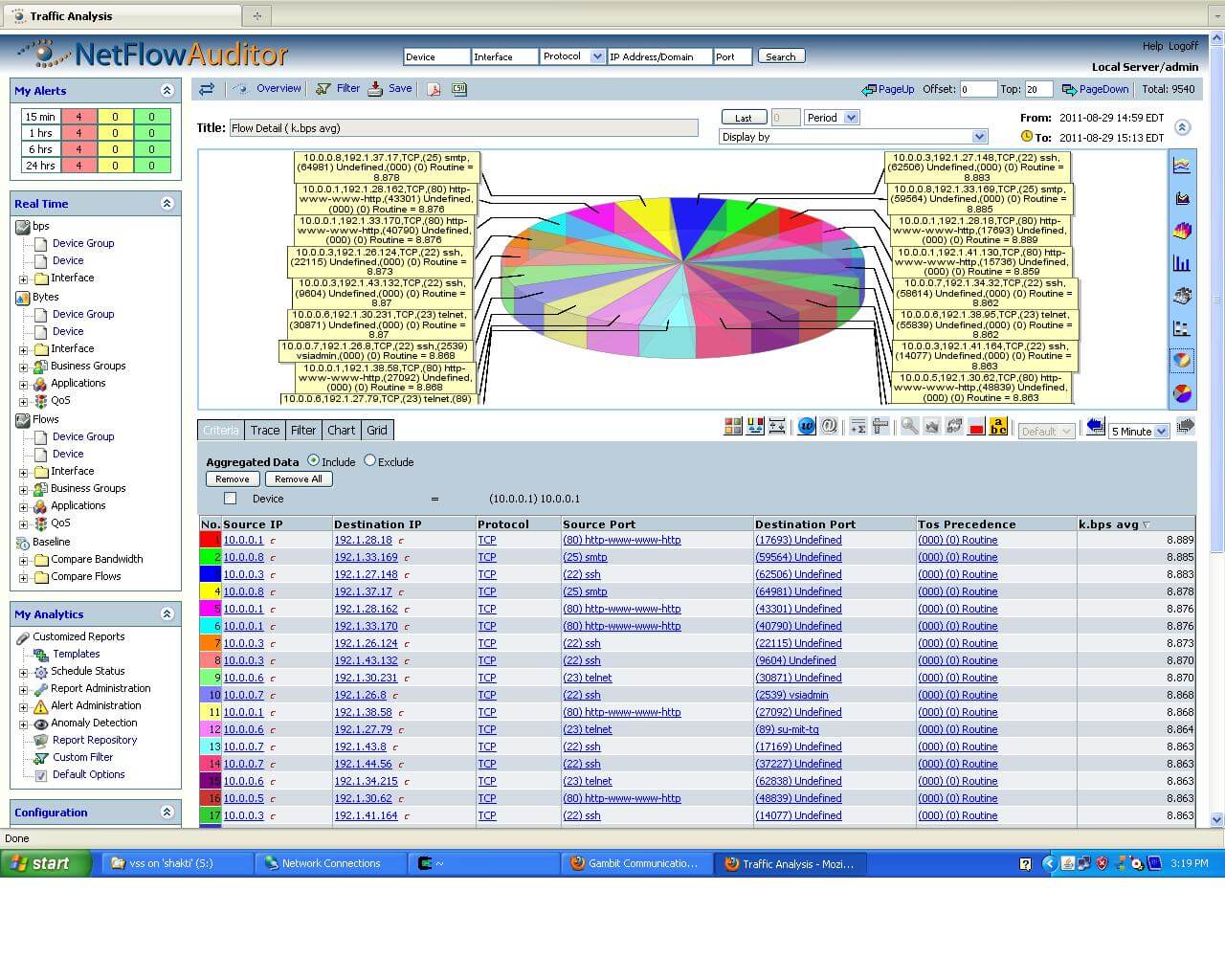Dartware LLC has released InterMapper 4.0 and InterMapper Remote 4.0, the latest versions of its network monitoring and alert software. The new versions gain numerous enhancements and changes.
| <?php virtual(“/includes/boxad.inc”); ?> |
Intermapper's network monitoring software helps you create a network map, giving you a live view of what's happening on your network. Color-coded statuses tell you what's up and what's down. A variety of map layout options and icon choices help bring your unique IT environment to life. About Intermapper. Intermapper network management software detects your devices, monitors their network health and spots slowdowns, if any. It sends you email, text or sound alerts whenever the performance thresholds are exceeded; thus you can fix the problem right away. InterMapper is a cross-platform, network monitoring, and network mapping program. InterMapper is an easy to configure and fully featured management tool and is integrated with FlowsTM, a robust NetFlow analyzer.
Designed for network administrators and system managers who need to maintain a visual idea of what’s happening on their network, InterMapper can tell you how network traffic is flowing, along with detailed information on routers, switches, hubs and other SNMP-compliant devices that are attached.
InterMapper 4.0 now supports Windows NT, Windows 2000 and Windows XP, along with Mac OS X and “Classic” Mac OS. Dartware is working on versions for Unix and Linux as well.
The software now features a “Map Status” probe that enables you to view sub-maps whose contents can then be manipulated with InterMapper Remote. You can also configure multiple devices with a single action using “Aggregate Actions.” And almost every aspect of operation on an InterMapper server can now be configured remotely using InterMapper Remote.
Dartware also claims that with Map Status, InterMapper is more scalable — you can place InterMapper servers on remote locations and monitor them from a network operations center, minimizing traffic and thus decreasing server load. InterMapper 4.0 also gains enhanced remote network monitoring with security.
InterMapper licenses start at US$295 and scale upward depending on how many devices you want to add. Support subscriptions provide you with free updates, enhancements and bug fixes for a one year period. More details and demo links are available from the InterMapper Web site.
Net::Intermapper::Device - Interface with the HelpSystems Intermapper HTTP API - Devices
Net::Intermapper::Device is a perl wrapper around the HelpSystems Intermapper API provided through HTTP/HTTPS for access to device information.
All calls are handled through an instance of the Net::Intermapper class.

Class constructor. Returns object of Net::Intermapper::Device on succes. Attributes are:
Name of the map containing the device.
Full path of the map containing the device, including the name of the map.
The IP or AppleTalk address of the device that is probed by InterMapper. The IP address is represented in dotted-decimal notation, e.g. 'a.b.c.d'. The AppleTalk address is represented in slash notation, e.g. 'a/b'.
A unique, persistent identifier for this device instance. The Id will be unique across all maps on a single InterMapper server. This value is used for lookups in the users method in Net::Intermapper.
The name of the device. The name is the first non-empty line in a device's label on a map.
The human-readable name of the InterMapper probe.
The comment associated with the device.
The SNMP community of the device.
True if the device's behaviour is set to display unnumbered interfaces.
The fully-qualified DNS name of the device.
True if the device's behaviour is to ignore AppleTalk interface information.
True if the device's behaviour is to ignore interface discards.
True if the device's behaviour is to ignore interface errors.
True if the device's behaviour is to ignore outages.
True if the device's behaviour is to allow periodic reprobe.
A special URL representation describing the InterMapper probe and its parameters, e.g. improbe://address:port/...
The latitude of the device. The value will be a double within the range [-90..90] or empty string if the device does not have this attribute set.
The longitude of the device. The value will be a double within the range [-180..180] or empty string if the device does not have this attribute set.
The time when the device last went down. Value is 0 if device has not gone down since we started monitoring it.
The time when the device last came up (ie rebooted), based on the value of sysUpTime. The value is 0 if unknown.
The time when the device status last transitioned from DOWN to UP. Value is 0 if this has not happened since we started monitoring.
The device's MAC Address. If the device has multiple interfaces, this field will contain the MAC Address associated with the device's main IP Address (the same address in the address field).
Value is one of { ROUTER , SWITCH , HUB, END SYSTEM }
The unique Id of the map file containing the device.
The maximum number of attempts to reach the device, typically indicates the maximum number of packets to send during each poll, for packet-based probes.
The NetBIOS/WINS name of the device.
The percent loss (# packets lost/total # packets sent).
The short-term percent loss (# packets lost/# packets sent).
The percent availability (time up/time monitored).
The poll interval of the device, in seconds. Value is 0 if non-polling.
The UDP or TCP port number. If the port number is not applicable, this value is always 0. (e.g. for ICMP)
Value is one of { name , addr , none }.
Intermapper Snmp
The last round-trip time in milliseconds, if known.
The device's SNMPv3 authentication password.
The device's SNMPv3 authentication protocol (MD5, SHA, None).
The device's SNMPv3 privacy password.
The device's SNMPv3 privacy protocol (DES, None).
The device's SNMPv3 user name.
The device's SNMP version (SNMPv1, SNMPv2c, or SNMPv3).
The status of the device. The value is one of { 'UP', 'DOWN', 'UNKNOWN' }.
The status level of the device. The value is one of { 'Unknown', 'OK', 'Warning, Acked', 'Warning', 'Alarm, Acked', 'Alarm', 'Critical', 'Critical, Acked', 'Down', 'Down, Acked'}.
The reason the device has its status level.
The value of sysDescr.
The value of sysName.
The value of sysContact.
The value of sysLocation.
The value of sysObjectID.
The timeout of the device, in seconds. Value is 0 if not-applicable to the probe.

Identifier of the device in the IMID format.
One of { none, other, snmp, tcp, udp, icmp, cmd, bigbro, ntsvcs }. These values have been updated in 5.0 to match the values used by the database in the probekind field of the devices table.
XML dataset DTD, type='probe'.
Intermapper Software
1, 2, 3 - SNMP versions. 0 for non-SNMP.
16-bits integer.
SnmpAdminString (entPhysicalSerialNum of chassis).
SnmpAdminString (entPhysicalMfgName of chassis).
SnmpAdminString (entPhysicalModelName of chassis).
Data retention policy for IM Database
Customer-supplied device name reference, for linking to an external database.
The value of sysEnterpriseID.
User-specified device type.
System uptime.
Timestamp of last modification to this device.
Device ID of the parent probe group; this device's id if this device is a probe group; 0 if the device is not part of a probe group.
The acknowledgement state of the device; one of { 'None', 'Basic', 'Maintenance' }. The AckMessage field must also be set to import this field. Indefinite maintenance will be set if AckExpiration is missing and state is set to 'Maintenance'.
Intermapper
The message associated with the acknowledge state. If Acknowledge is not set and an AckMessage is supplied, Acknowledge will be set to 'Basic'.
The absolute time when the timed acknowledgement expires, if any. The AckMessage field must also be set to import this field. Acknowledge will be set to 'Maintenance' if not supplied.
The time in seconds remaining until the timed acknowledgement expires, if any.
The Vertex Id of the vertex associated with the device. Matches the VertexId of the corresponding vertex in the vertices table.
True if layer2 mapping is enabled for this device.
Returns the directive aka data header required by the Intermapper API to perform CRUD actions. This is handled through the create, update and delete method and should not really be used.
Intermapper Pricing
Returns the object data formatted in TAB delimited format. Used in combination with the header and the format method in Net::Intermapper to perform CRUD actions. This is handled through the create, update and delete method and should not really be used.
Returns the object data formatted in Comma Separated delimited format. Used in combination with the header and the format method in Net::Intermapper to perform CRUD actions. This is handled through the create, update and delete method and should not really be used.
Returns the object data formatted in XML format. Used in combination with the header and the format method in Net::Intermapper to perform CRUD actions. This is handled through the create, update and delete method and should not really be used.
Internal method to properly format the data and header for CRUD actions. Typically not used.
NEEDS TO BE ADDED
This variable will contain detailed error information.
For this library to work, you need an instance with Intermapper (obviously) or a simulator like Net::Intermapper::Mock.
- Moose
None so far
None so far :)
This program is free software licensed under the...
The full text of the license can be found in the LICENSE file included with this module.
To install Net::Intermapper::Device, copy and paste the appropriate command in to your terminal.
For more information on module installation, please visit the detailed CPAN module installation guide.
